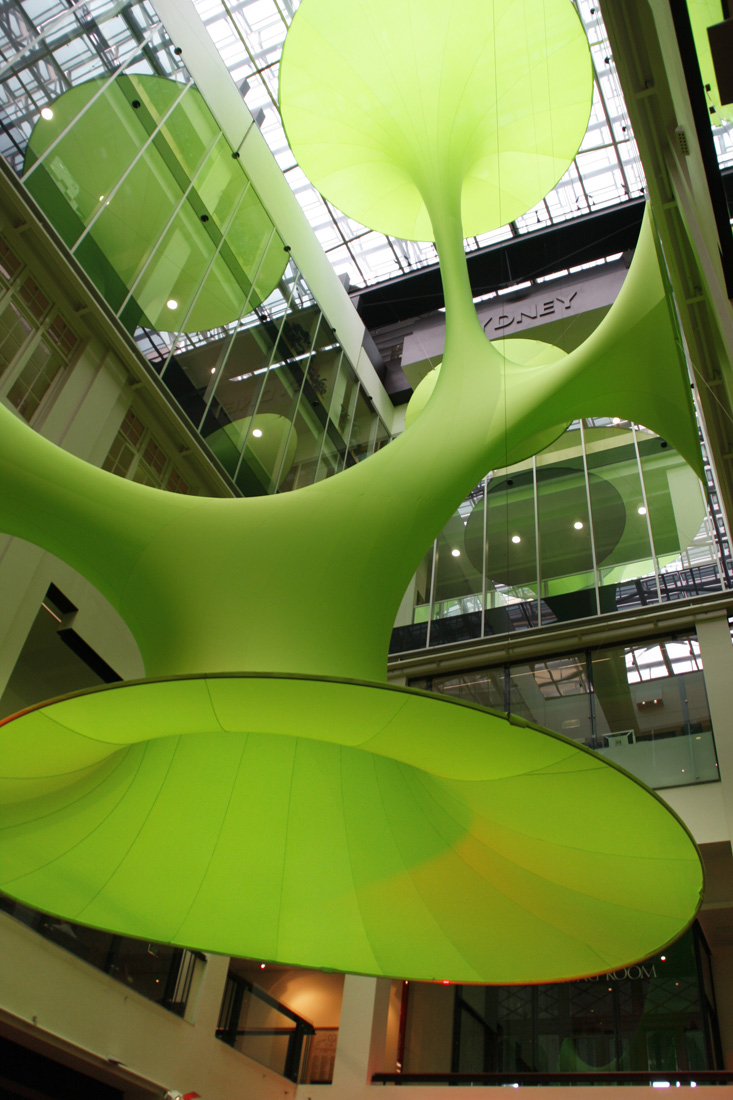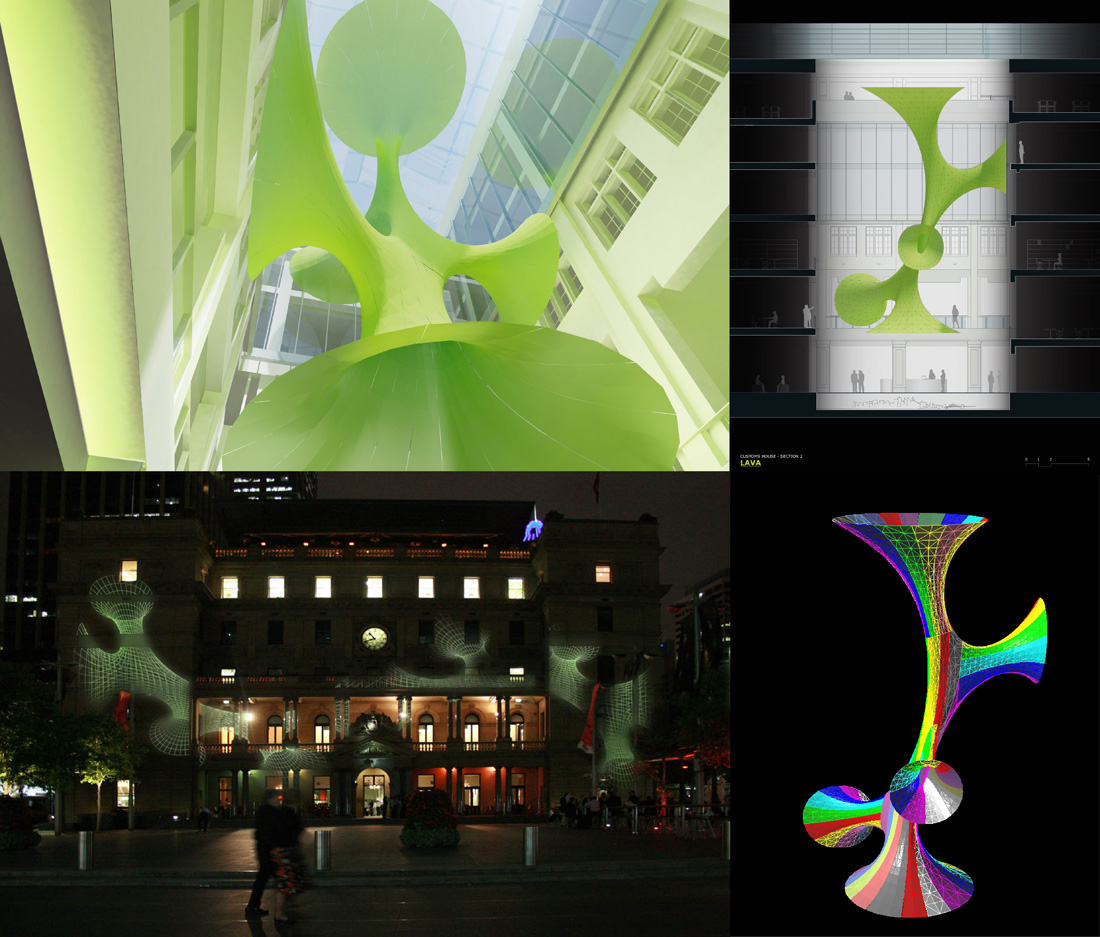


Architects: LAVA - Chris Bosse, Tobias Wallisser and Alexander Rieck
Location: Sydney, Australia
Project year: 2008
Project Team: Chris Bosse, Tobias Wallisser, Alexander Rieck
Collaborators: Jarrod Lamshed, Esan Rahmani, Kim Ngoc Nguyen, Anh Dao Trinh, Erik Escalante Mendoza, Pascal Tures, Mi Jin Chun, Andrea Dorici
Materials: Specially treated high-tech Nylon and light
Area: 300 sqm
Volume: 3,000 sqm
Photographs: LAVA
Digital Workflow
The project renounces on the application of a structure in the traditional sense. Instead, the space is filled with a 3-dimensional lightweight-sculpture, solely based on minimal surface tension, freely stretching between wall and ceiling and floor.
The design and fabrication procedure uses state-of-the-art digital workflow; beginning with 3D computer modelling, that is engineered structurally before undergoing a process of computer controlled (CNC) material cutting and mechanical re-seaming.
The computer-model, based on the simulation of complexity in naturally evolving systems, feeds directly into a production-line of sail-making-software and digital manufacturing.
The product shows a new way of digital workflow, enabling the generation of space out of a lightweight material that requires minimal adjustments onsite to achieve a complete installation in an extremely short time.
Sustainability
LAVA’s process of optimized minimal surface design and CNC (computer numeric code) fabrication technology allows the sculpture to reveal a new dimension in sustainable design practice.
Fulfilling the sustainable agenda of the venue, the work succeeds in its quest for optimum efficiency in material usage, construction weight, fabrication and installation time, while at the same time achieving maximum visual impact in the large atrium space.
The pavilion is easily transportable to any place in the world; can be quickly installed, and is fully reusable.
Fabrication
The sculpture materials consist of a double stretch, 2 way woven fabric that is mechanically attached to specially designed aluminium track profiles. Each profile is suspended from above, and to the side, on 2mm stainless steel cabling.
Concept
Since the 1970’s, with Frei Otto’s soap-bubble experiments for the Munich Olympic Stadium, naturally evolving systems have been an intriguing area of design research; something that hasn’t been lost on the team and their fascination with new building typologies and naturally developed structures.
concept image
The installation is a ‘Minimal Surface’ that consists of a tensioned Lycra material, digitally patterned and custom-tailored for the space. Five sides of the sculpture reach out to carefully hover just off the main interior atrium of the Customs House above the model of the city.
The lightweight fabric design follows the natural lines, contours and surface-tension of the fabric. The curves can be seen as the result of invisible bubbles that are translated into an organic 3-dimensional space.
While appearing solid, the structure is soft and flexible and creates highly unusual spaces within customs house, which come to life with projection and lighting.
Rising up to the top level restaurant, a vertical distance of almost 20m, the sculpture provides an intense visual contrast to the beautifully restored heritage interior of Customs House.
undefined
The Customs House ‘Media Wall’ is also activated with content detailing the process of design, engineering, fabrication and installation of the sculpture along with the impressive, recent design projects completed by LAVA across 12 video screens.
The whole installation is immersed in a soundscape by sound artist David Chesworth and graphic design by TOKO, and includes the latest 3D works by visual artist Peter Murphy.
source: www.archdaily.com
architecture NOW
Thursday, December 18, 2008
Green Void / LAVA
Subscribe to:
Post Comments (Atom)




0 komentar:
Post a Comment